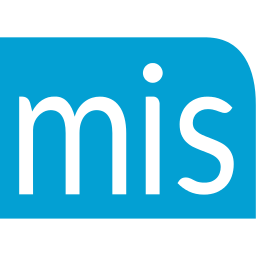One of my readers sent me two objections he’s struggling with and they are: “We need to do some research first,” and “I don’t make a decision on the day,” or the variation: “Do you expect me to make a decision, like, now?” Two interesting objections and two that are easy to handle – if you are prepared for them in advance with good scripts.
Let’s start with the second objection of “Do you expect me to make a decision, like, now?” This is an objection that never should have come up because it should have been discovered and dealt with during the initial prospecting call. As I’ve written earlier, during the prospecting call you need to qualify your prospect on six different qualifiers, and one of those is time frame. Here again are a couple of qualifying questions on the cold call that would have prevented this objection from ever coming up:
“If you like our solution when we go over the presentation next week, what would be your timeframe for putting it to use for you?”
OR
“And if you like what you see next week, is this something you could make a decision on right away?”
Again, these kinds of qualifying questions are the ones you ask during the initial call so you don’t get this objection during the close.
Another way to avoid this objection is to re-qualify before the closing presentation. I always recommend you re-qualify at the beginning of your demo so you aren’t ambushed with objections like, “Do you expect me to make a decision, like, now?” Here are a couple of questions to ask before you begin your demo:
“And ________, let me ask you: if, after we finish the demo today, you like what you see and can see how it can help you (repeat their buying motive), is this something that you can make a decision on today?”
OR
“And __________, let’s talk about your time frame for putting this solution to work for you. If you like what you see today, how soon could you move on it?”
Again, by using any of these techniques, you can avoid the two objections above. “But what if I still get these objections at the end??” I can just hear you asking… The key here is to then isolate the objection so you can see what you’re really dealing with. And the best way to do that is to ask questions and listen. Try:
“What is your timeline then?”
And Layer:
“Based on what we’ve gone over today, how does this sound to you?”
OR
“I can certainly appreciate that, but while you’re thinking it over, consider this…” And keep pitching one or two points you know they really like. And then: “Does that make sense to you?” And if it does, then ask for the order again: “So why don’t we do this…”
Never take one no (or two or three or four for that matter) as the ultimate answer, but instead be ready to pitch the benefits and continue to ask for the order.
The other objection: “We need to do some research first,” can and should also be prevented by qualifying for timeline during the initial call, but if it still comes up, then treat it like any other stall and try to get to the real objection that is hiding behind it. And, as always, use a few proven scripts to make it easy, and ask questions that are designed to get your prospects to reveal what it’s going to take to close the sale. Try:
“I totally understand – just out of curiosity, what parts do you need to do research on?”
OR
“O.K., when you say research, does that involve comparing it to other companies?”
[If Yes]
“And what part of this are you comparing the most?”
OR
“I help my clients do research all the time – in fact, because of I have access to so many resources in this industry, I can usually get answers and solutions they can’t. Tell me, what specifically are you interested in learning more about?”
OR
“And, based on what you know about it now, if your research comes back positive, does this sound like a solution that would work for you?”
[If Yes]
“Great! And what is your timeline for acting on this?”
[If you get a date]
“Terrific! Then let me help you do the research so you can put this exciting (profitable, proven, etc.) solution to work for you today!”
OR
“________, I’ve only given you part of my presentation because I didn’t want to overwhelm you. But apparently I’ve left out some points that you need to know more about. Tell me, what specifically do you want more information on?”
OR
“From what you DO know about this so far, can you see this as being a fit for you?”
[If Yes]
“Great. Tell me what I can do to help you learn more about this so we can put it to work for you.”
As you can see, the more you get your prospect to talk, the more information you’ll have as to what the real hold up is, and what you can do to overcome it. Use the scripts above to help prevent some of these objections from ever coming up or to isolate the real objection and close in on the solution that will work for each particular prospect.
